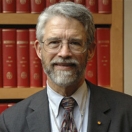
On Tuesday evening, President Obama delivered his farewell address in Chicago. In the glow of that extraordinary speech, I can’t help but think yet again what an exceptional privilege it has been to serve this President as his Assistant for Science and Technology and to lead the amazing group of people who joined him and me to staff the White House Office of Science and Technology Policy (OSTP).
Nearly 8 years ago, President Obama pledged to put science “in its rightful place” in his Administration. He proceeded to keep that pledge in ways and degrees that few could have imagined at the time.
At the very beginning of his Administration, he secured $100 billion for science, technology, and innovation in the Recovery Act. He appointed the first-ever U.S. Chief Technology Officer and Chief Information Officer (followed later by the first Chief Data Scientist and first Office of Digital Services); and his first tranche of Presidential appointments included five Nobel laureates in science. Within his first months in office he launched path-breaking, Administration-wide policies on scientific integrity, transparency, and public access to the results of government-funded research.
Before his first year was up, President Obama had rolled out the first-ever American Innovation Strategy, launched the Educate to Innovate public-private-philanthropic partnership to lift the Nation’s game in STEM education at the K-12 level, and laid the groundwork for a reprioritization at NASA to focus more on advanced technology, space science, commercialization of access to low Earth orbit, and the long-term goal of sending humans to Mars. There followed, in steady procession, major initiatives on clean-energy research, advanced manufacturing, big data, broadband, neuroscience, antibiotic resistance, precision medicine, climate change, strategic computing, and more, nearly all of them structured as partnerships across government, industry, academia, and civil society.
Under President Obama, OSTP became the largest, most diverse, and most productive in the storied history of the Office; the interagency National Science and Technology Council (NSTC)—responsible for science and technology initiatives that cross departmental and agency boundaries—was likewise the most active and productive in the history of that entity; and the President’s Council of Advisor on Science and Technology (PCAST)—made up of leaders from the Nation’s science, engineering, and innovation communities who advise the President, uncompensated, on a part-time basis—similarly was almost certainly the most active and influential in the history of White House bodies with this focus, dating back to the Eisenhower Administration.
These and many other achievements in science, technology, and innovation policy under President Obama are well covered in last summer’s White House blog on “100 examples of putting science in its rightful place”, as well as in the OSTP Exit Memo that U.S. Chief Technology Officer Megan Smith and I released last week.
But I would add here a bit of emphasis on the President’s personal commitment to lifting up science, technology, and innovation in the national conversation and in the aspirations of our young people.. I don’t believe that any President has ever talked as much about these topics in major addresses or celebrated as many scientists, technologists, innovators, astronauts, teachers, mentors, and students in White House events. Certainly no other President before him ever hosted a White House Science Fair to honor the cream of the Nation’s young science, engineering, and mathematics talent (President Obama hosted six) or an “Astronomy Night for Kids” on the South Lawn (he hosted two).
His is a science, technology, and innovation to be celebrated but also to be built upon. In the years to follow, science, technology, and innovation will only continue to increase in importance to the Nation’s economy and future. The OSTP Exit Memo, with inspiration from the President’s extraordinary “Frontiers Conference” in October of last year, highlights 20 science and technology frontiers where future investment and cross-sector collaboration will drive American innovation in the decades ahead, as well as 10 near-term actions that can broaden participation in the science, technology, and innovation to help drive prosperity for all Americans.
I leave my White House office with a profound sense of gratitude—gratitude to this President for his remarkable leadership and support for science, technology, innovation, and STEM education and inclusion; gratitude to my colleagues in OSTP, across the White House, in PCAST, and all across the Executive Branch departments and agencies, for the focus and energy and intellect they brought to the President’s mandate to “put science in its rightful place”; and to our partners among state, local, and tribal officials, industry, academia, and civil society for their enthusiastic collaboration in these efforts. My heartfelt thanks to all. Let the work continue.


